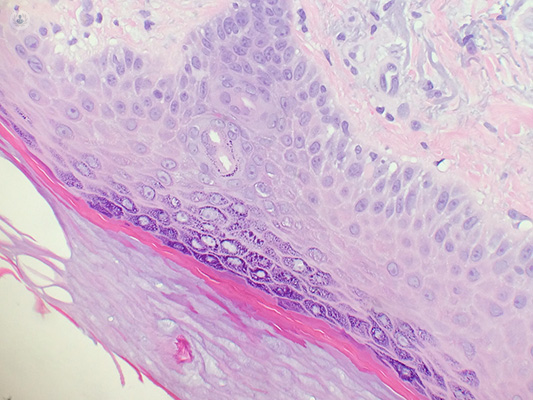Connective tissue disease
Dr Michelle McHenry - Rheumatology
Created on: 05-03-2018
Updated on: 05-10-2023
Edited by: Aoife Maguire

What is connective tissue disease?
A connective tissue disease is any one of a number of conditions that affect the connective tissues of the body.
Connective tissues are those that join and support different organs and body parts, and include tendons, ligaments, cartilage, adipose (fat) tissue, and bone. Connective tissues are made up of proteins such as collagen and elastin. In connective tissue disease, these proteins become inflamed, and the connective tissue and adjoining body parts can be harmed.
Types of connective tissue disease
Examples of connective tissue disease include:
- Systemic lupus erythematosus (SLE) – this disease can cause inflammation in connective tissue throughout the body, and is capable of affecting almost any organ.
- Rheumatoid arthritis (RA) – one of the most common connective tissue diseases. RA is an autoimmune disease that can be inherited. The immune system attacks the membrane around joints and causes inflammation. The heart, lungs, and eyes can also be affected.
- Scleroderma – scar tissue forms in the skin, internal organs, and small blood vessels. This autoimmune condition is more common in women than in men.
- Marfan syndrome – a genetic disease causing abnormal fibrillin.
- Ehlers–Danlos syndrome – different areas of the body can suffer progressive deterioration of collagen due to a defect in its synthesis.
- Sjögren's syndrome (Sjögren's disease) – the patient is unable to secrete certain bodily fluids, including saliva and tears. It can occur alone, but is often associated with other connective tissue diseases, such as scleroderma and SLE. It is chronic and slow-progressing.
- Polymyositis – the muscles suffer inflammation and degeneration. It can also affect the skin (dermatomyositis).
- Mixed connective tissue disease (MCTD) – a disorder which has features of several other connective tissue diseases, including SLE, dermatomyositis, and polymyositis. It is usually chronic, yet milder than most other connective tissue diseases. It may develop into another disease, such as SLE.
Symptoms of connective tissue disease
Different connective tissue disease can manifest with different symptoms, but some common symptoms include:
- Malaise – a general feeling of being poorly. This may include tiredness and a mild fever.
- Pain and inflammation – typically in the joints and muscles. Joints can become inflamed, swollen and deformed, as with rheumatoid arthritis.
- Cold/numb extremities (Raynaud's disease) – the fingers or toes may turn white and then a blue or purple colour when cold or stressed.
- Swelling in the hands or fingers
- Rash – areas of skin, such as the knuckles may develop red or reddish-brown patches.
What are the causes of connective tissue diseases?
The causes of connective tissue disease are not fully understood. Some connective tissue disease seem to run in families. Many are autoimmune disorders, meaning that the immune system attacks healthy cells by mistake.











